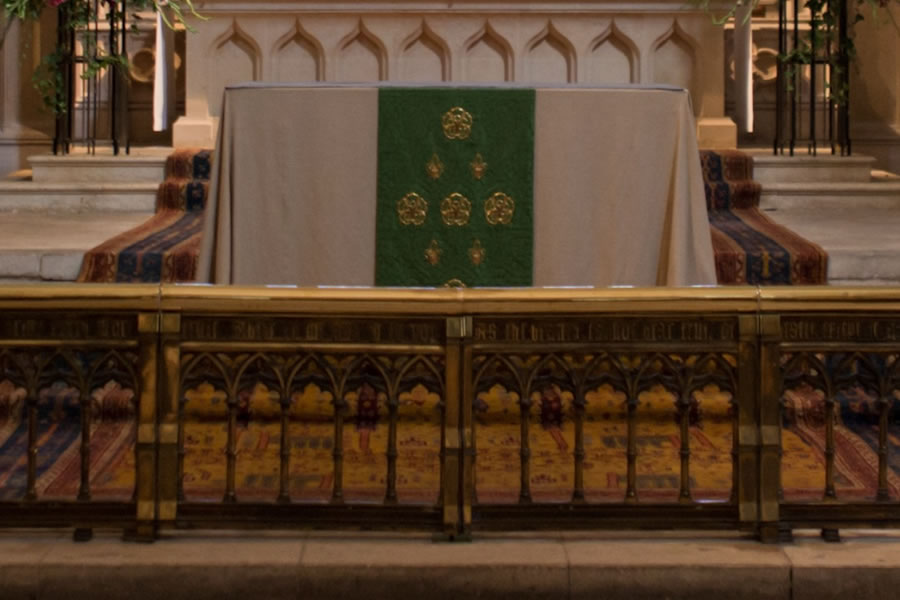
The Altar or Communion Rail (Part II of III)
02-23-2020Letter from the PastorFr. Don Kline, V.F.Dear Brothers and Sisters,
The celebration of Holy Mass harkens back to the Jewish worship described in the Old Testament. It is good to remember that Christianity has its roots in the Jewish traditions. Christ, as a Jew, even said: “Do not think that I have come to abolish the Law or the Prophets; I have not come to abolish them but to fulfill them” (Matthew 5:17). The Catholic Church, in her Sacred Liturgy, reaches back into the traditions of the past with great awareness of all that God has revealed throughout history. We don’t have to make up our own Mass, rather we are blessed to draw from the history of worshipping God as revealed in Sacred Scripture in connection with our Jewish brothers and sisters.
What does the Communion rail have to do with worshipping God? Rev. Jerry J. Pokorsky, addressed the importance of the Communion rail this way: “the shape of the Mass developed and codified identifiable parallels to Old Testament worship and even anticipated order in heaven. The heavenly Jerusalem isn’t a mob scene, but arranged in order and distinction: “cosmos” not “chaos”:
- The Liturgy of the Word replaces the worship of the synagogue.
- The Liturgy of the Eucharist fulfills - and replaces - the Temple sacrifices.
- The tabernacle replaces the holy ark of the synagogue containing the sacred Torah scrolls.
- The Word made Flesh in the Eucharist fulfills the word of God in Scriptures.
- The altar of sacrifice becomes at once the sacrificial altar of the Lamb of God as well as a sign of the Body of Christ Himself.
- And the Communion rail establishes the boundaries of worship, defining the Holy of Holies of the sanctuary.
In a very powerful way, the Communion rail also invites people to confidently step up to the very edge of the Holy of Holies in reverence. St. Gregory the Great reminds us that the Communion rail enables us to focus even more on the altar of sacrifice where “the heart [of the just] is said to be the altar of God.” The faithful cannot present their sacrificial gifts to the Father except through the hands of the priest. But neither can the priest place the sacrifices on the altar unless the faithful freely give them. Priest and people, head and body, sanctuary and nave: all complementing the other in the one worshiping Church.
To grow in our faith, it is important that the faithful of God continue to receive solid catechetical and theological training. The desire to have bells in our bell tower, a pipe organ in our choir loft, beautiful paintings throughout the interior of our church are just a few ways that everyone, young and old, are nourished in the faith. The sense of the sacred, seeing and hearing beautiful things, only serves to enhance our faith. Everything in the liturgy, including Communion rails, are meant to increase our sense of the transcendence and beauty of God. These are not just decorations or frivolous items. There is nothing superfluous in Sacred Liturgy.
BACK TO LIST